25+ SAMPLE Construction Timesheet
-
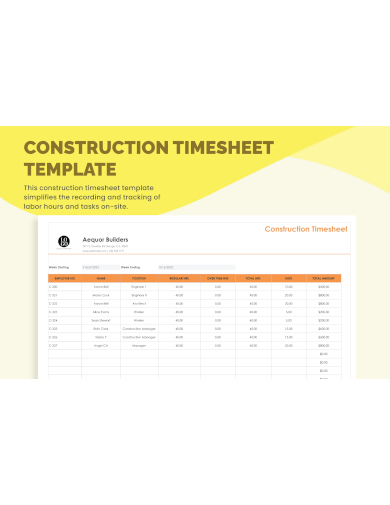
Construction Timesheet Template
download now -
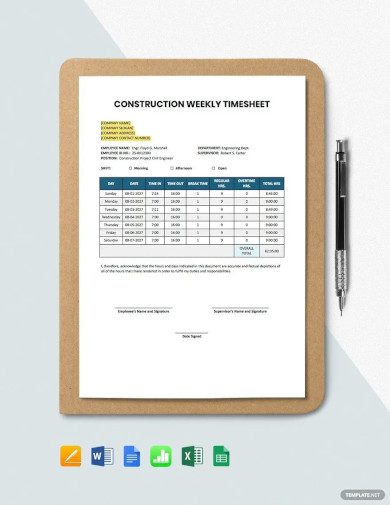
Construction Weekly Timesheet Template
download now -

Format Construction Timesheet Template
download now -
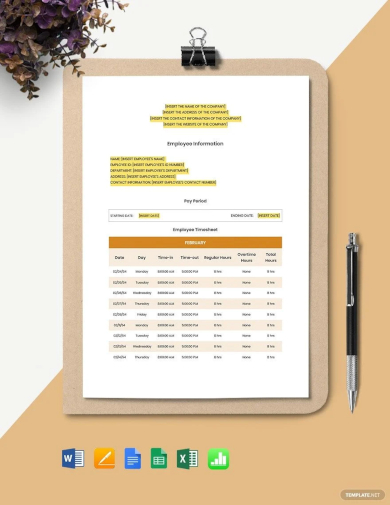
General Construction Timesheet Template
download now -
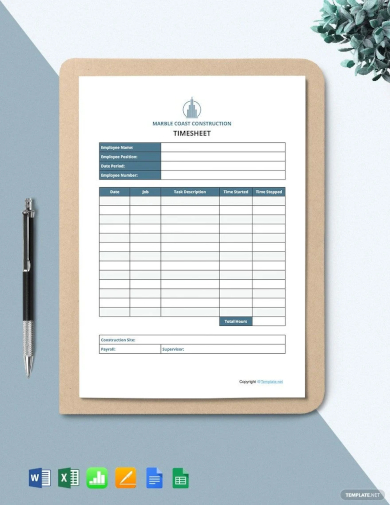
Sample Construction Timesheet Template
download now -
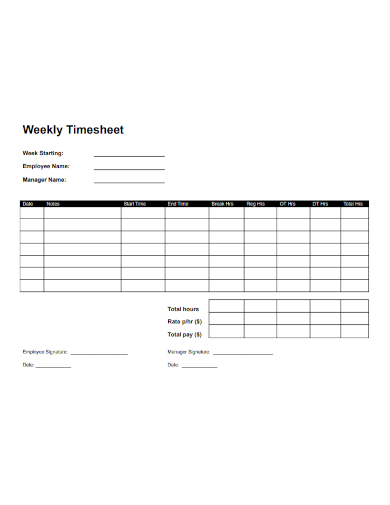
Printable Construction Timesheet
download now -
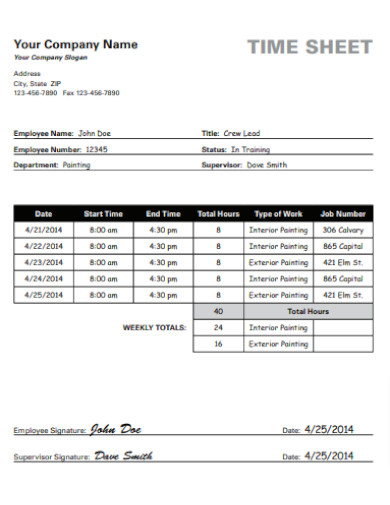
Weekly Construction Company Timesheet
download now -
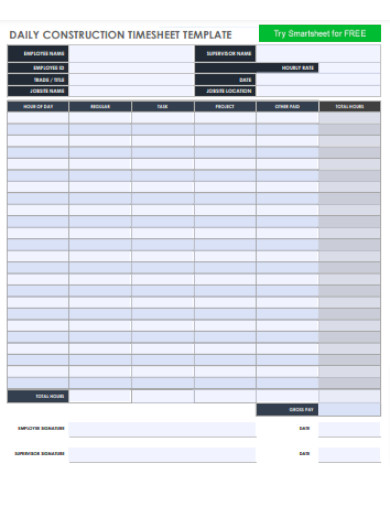
Blank Daily Construction Timesheet
download now -
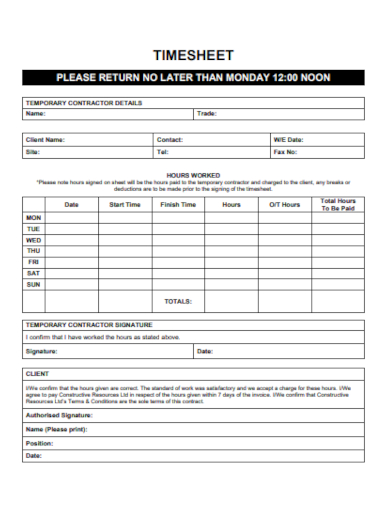
Construction Contractor Timesheet
download now -
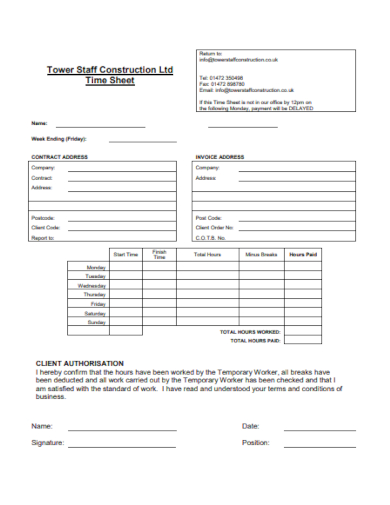
Employee Construction Timesheet
download now -
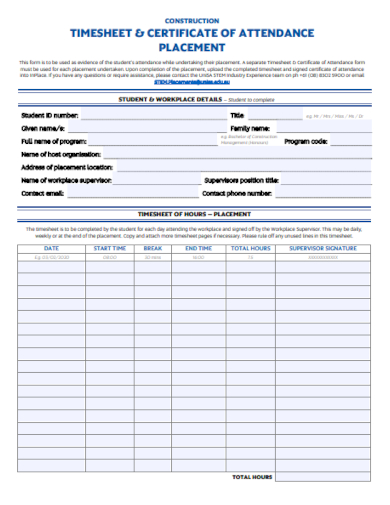
Hourly Construction Timesheet
download now -
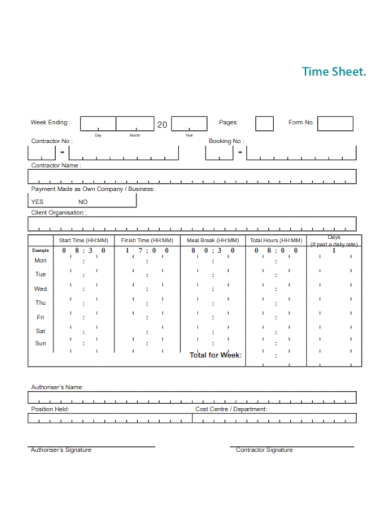
Construction Timesheet Format
download now -
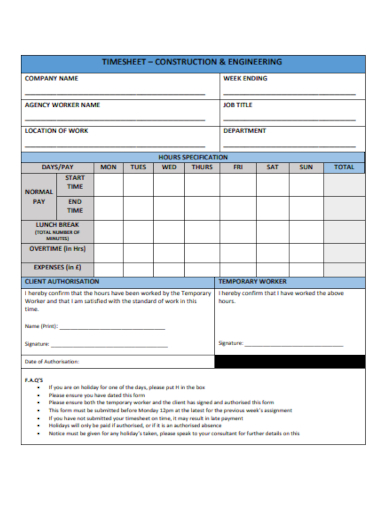
Construction Engineering Timesheet
download now -
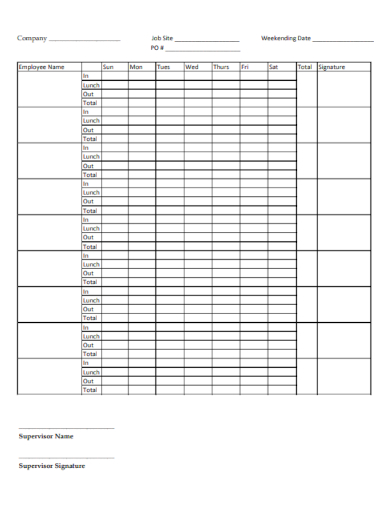
Construction Payroll Timesheet
download now -
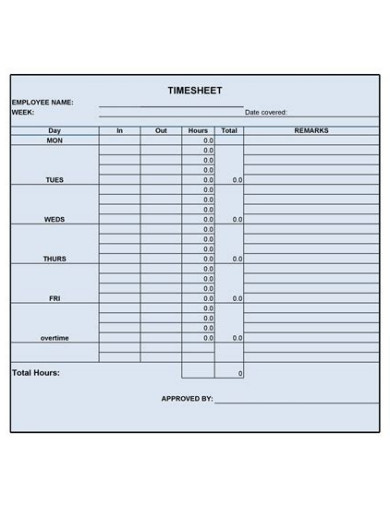
Monthly Construction Employee Timesheet
download now -
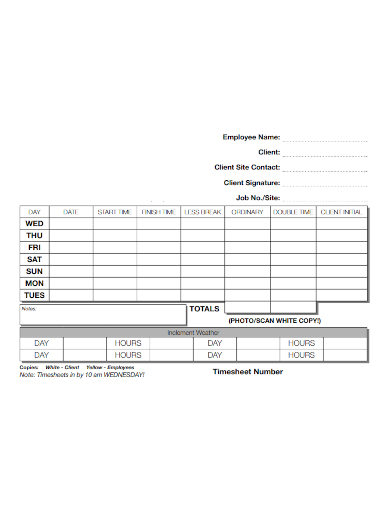
Construction Labour Timesheet
download now -
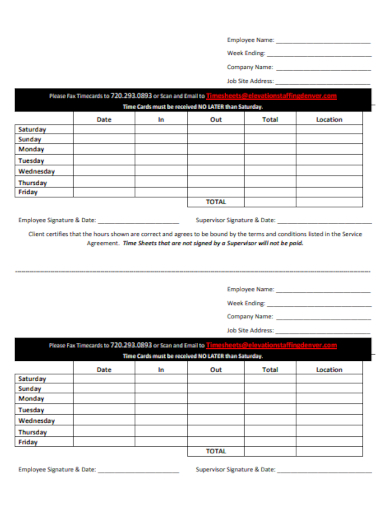
Basic Construction Timesheet
download now -
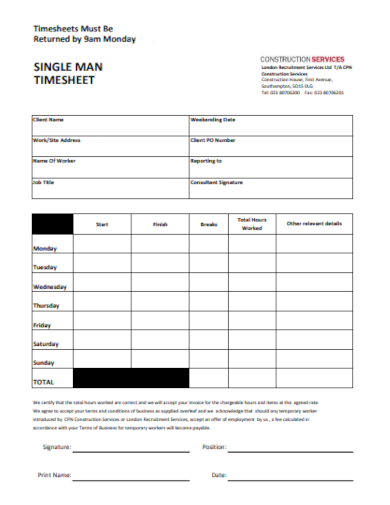
Foreman Construction Timesheet
download now -
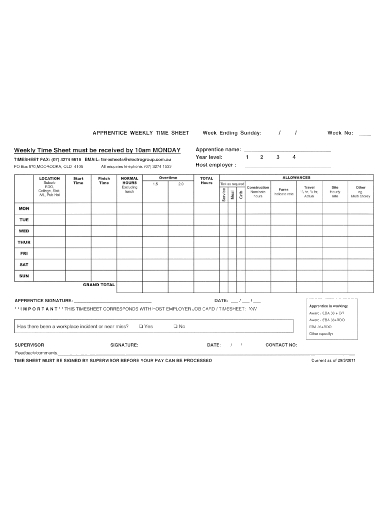
Construction Project Timesheet
download now -
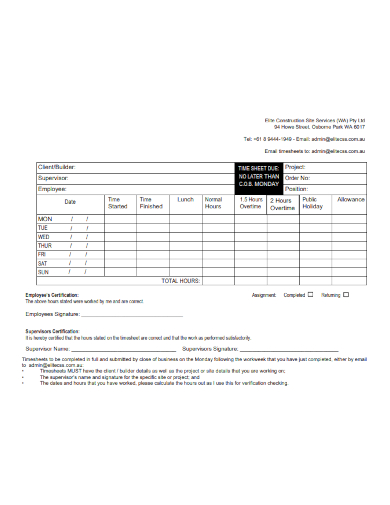
Interior Design Construction Timesheet
download now -
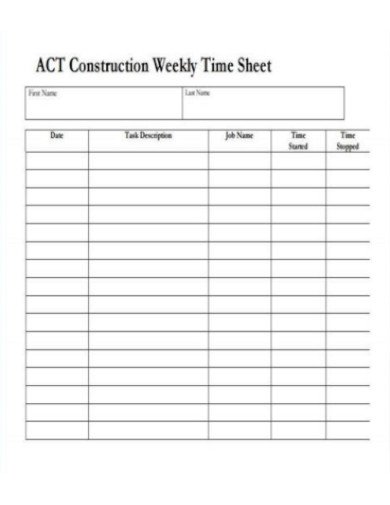
Editable Weekly Construction Timesheet
download now -
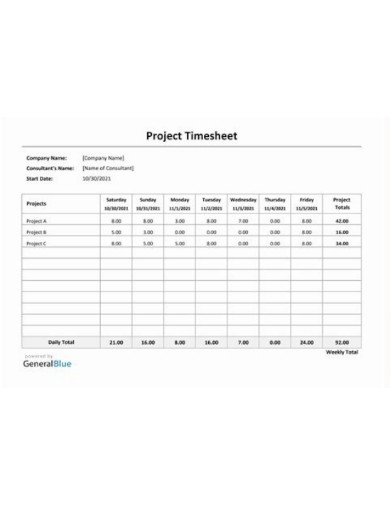
Daily Construction Project Management Timesheet
download now -
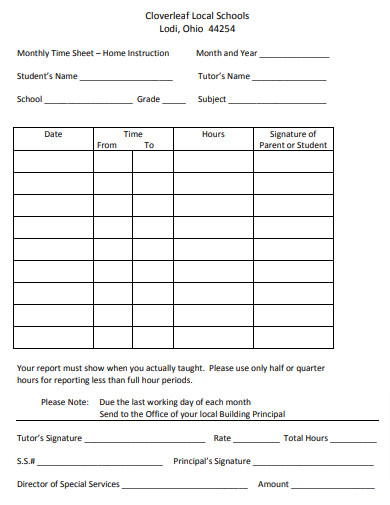
Monthly Home Construction Timesheet
download now -
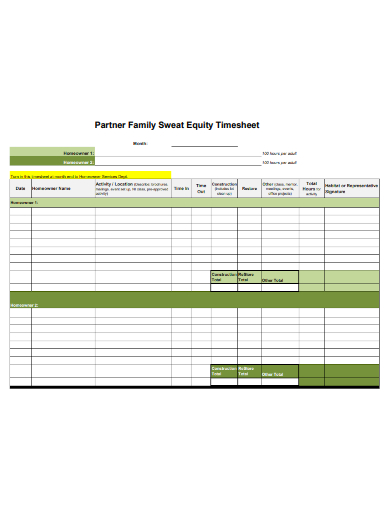
Standard Construction Timesheet
download now -

Standard Weekly Construction Timesheet
download now
FREE Construction Timesheet s to Download
25+ SAMPLE Construction Timesheet
Definition
Understanding the Importance of Construction Timesheets:
The Evolution of Timesheets in Construction
Features of an Effective Construction Timesheet:
Benefits of Implementing Digital Construction Timesheets:
Challenges and Solutions in Timesheet Management:
Challenges:
Solutions:
Best Practices for Construction Timesheet Management:
Tips for Using Construction Timesheet:
What details should a construction timesheet include?
Why is timesheet accuracy crucial in the construction industry?
How frequently should a construction timesheet be updated?
Are mobile apps available for construction timesheet management?
Can construction timesheets help in forecasting labor needs?
How do construction timesheets support subcontractor management?
Definition
A Construction Timesheet is a record-keeping tool used in the construction industry to track the number of hours that workers spend on various tasks or projects. Essentially, it’s a document or digital log that provides a detailed breakdown of a worker’s activities during a given period, often daily or weekly. This timesheet is crucial for payroll purposes, ensuring workers are compensated accurately for their hours. Moreover, it assists project managers in monitoring labor costs, assessing productivity, and planning resource allocation for ongoing or upcoming tasks in the construction process.
Understanding the Importance of Construction Timesheets:
In the world of construction, efficiency and accuracy are paramount. Timesheets play a pivotal role in ensuring both, serving as an indispensable tool for tracking work hours, managing resources, and optimizing productivity. This guide delves deep into the world of construction timesheets, ensuring you leverage them to the fullest.
The Evolution of Timesheets in Construction
Once paper-based and manual, construction timesheets have come a long way. Modern timesheets leverage technology, offering digital solutions that seamlessly integrate with other construction management tools. Understanding this evolution provides insights into their current capabilities and potential future trends.
Features of an Effective Construction Timesheet:
An effective construction timesheet is more than just a tool to track hours. It should cater to the unique needs of the construction industry, facilitating smoother operations, accurate reporting, and improved productivity. Here are the key features to look for:
- User-Friendly Interface: It should be intuitive, making it easy for workers at all tech levels to input their hours, tasks, and other relevant information without hassle.
- Mobile Compatibility: Given the on-site nature of construction work, a mobile app or mobile-optimized platform is crucial. This allows workers to record hours in real-time from the job site.
- Real-time Syncing: Data should sync in real-time, enabling project managers and supervisors to get instant updates on work progress and hours logged.
- Geolocation and Geofencing: Geolocation can verify a worker’s location when logging hours, ensuring they’re on-site. Geofencing can send alerts if workers clock in or out outside of designated areas.
- Job and Task Tracking: Beyond just hours, the timesheet should allow workers to specify which jobs or tasks they worked on, providing a clearer picture of project progress.
- Integration Capabilities: The timesheet system should integrate seamlessly with other software solutions such as payroll, HR systems, and project management tools, streamlining various processes.
- Automated Alerts and Reminders: Automated notifications can remind workers to submit their timesheets or alert supervisors about anomalies like excessive overtime.
- Biometric or Photo Verification: Some modern timesheets offer biometric (fingerprint or facial) verification or photo clock-ins to reduce time theft or “buddy punching” (when one worker clocks in for another).
- Customizable Fields: Given the diverse nature of construction projects, having the ability to customize fields or add specific job codes can be beneficial.
- Detailed Reporting: Managers should be able to generate detailed reports, offering insights into labor distribution, project progress, overtime patterns, and more.
Benefits of Implementing Digital Construction Timesheets:
The transition from manual to digital timesheets in the construction industry has brought forth a myriad of advantages. Here’s a comprehensive look at the benefits:
Increased Accuracy:
Digital timesheets reduce the risk of human errors that are common with manual entries, ensuring that workers are compensated accurately for their hours worked.
Time and Cost Savings:
Automating the time tracking process eliminates the need for manual data entry and calculations, which can be time-consuming and costly.
Real-time Data Access:
Supervisors and project managers can access real-time labor data, enabling better decision-making and faster responses to project developments.
Enhanced Productivity:
With easy-to-use interfaces, workers can quickly log hours and tasks, allowing them to focus more on their core work responsibilities.
Reduced Time Theft:
Features like geolocation, geofencing, and biometric verification can deter and detect time theft or “buddy punching.”
Seamless Integration:
Digital timesheets can integrate with other software systems, streamlining processes like payroll processing, invoicing, and project management.
Environmental Benefits:
Digital solutions are paperless, contributing to reduced waste and a lower environmental footprint.
Improved Compliance:
Digital timesheets make it easier to adhere to labor laws and regulations. They can automatically track overtime, breaks, and other labor-related metrics, ensuring legal compliance.
Secure Data Storage:
Cloud-based timesheet solutions offer secure data storage, with encryption and backup capabilities, safeguarding sensitive employee and project information.
Scalability:
As the company grows, digital timesheets can easily adapt, handling more employees, projects, and data without significant overhauls.
Challenges and Solutions in Timesheet Management:
Timesheet management, while advantageous in many respects, also comes with its own set of challenges. Recognizing these challenges and addressing them can significantly enhance the efficacy of timesheet systems. Let’s explore these challenges and their potential solutions:
Challenges:
- Data Inaccuracy: Incomplete or wrongly filled timesheets can result in misrepresentation of hours worked.
- Time Theft and Buddy Punching: Employees might clock in for their colleagues or exaggerate their working hours.
- Resistance to Change: Transitioning from a manual to a digital system can meet resistance from employees unfamiliar or uncomfortable with technology.
- Complexity of Software: Overly complicated timesheet software can discourage users and lead to errors.
- Integration Issues: Challenges in integrating the timesheet system with other organizational tools and software can arise.
- Delayed Submissions: Employees might forget or postpone submitting their timesheets, leading to delays in processing.
- Cost of Implementation and Maintenance: Investing in a digital timesheet system and its subsequent maintenance can be expensive.
- Data Security Concerns: Handling and storing sensitive employee data can pose security risks.
Solutions:
- Automated Reminders: Set up automated reminders for employees to fill and submit their timesheets, reducing chances of delay or omission.
- Biometric Systems and Geofencing: Incorporate biometric verification or geofencing in the timesheet system to counter time theft and buddy punching.
- Training and Onboarding: Provide comprehensive training to employees when introducing a new timesheet system to ease the transition and reduce resistance.
- User-Friendly Software: Opt for intuitive, user-friendly software that employees can easily navigate and understand.
- Seamless Integration Capabilities: Choose timesheet solutions that can easily integrate with other organizational tools, ensuring a smooth flow of data across platforms.
- Regular Audits: Periodically review and audit timesheet data to identify and rectify inconsistencies or anomalies.
- Investment in Cloud-based Solutions: Cloud-based timesheet systems often come with lower upfront costs, regular updates, and better scalability.
- Robust Security Measures: Ensure the chosen system adheres to stringent security standards, with features like encryption, two-factor authentication, and regular backups.
Best Practices for Construction Timesheet Management:
Effectively managing timesheets in the construction sector can streamline operations, ensure accurate billing, and maintain positive labor relations. Here are some best practices to consider:
Regular Training and Onboarding:
Ensure all employees, both old and new, are well-trained on how to use the timesheet system. Regular refreshers can also help in addressing any new features or changes.
Set Clear Submission Deadlines:
Establish and communicate clear deadlines for timesheet submissions, ensuring timely payroll processing and project billing.
Use Real-time Data Entry:
Encourage workers to log hours in real-time or at the end of each workday to enhance accuracy and reduce the chances of forgetfulness or estimations.
Implement Approval Workflows:
Designate supervisors or managers to review and approve timesheets. This adds a layer of oversight and can catch errors or inconsistencies.
Automate Where Possible:
Utilize features like automated reminders, alerts for anomalies (e.g., excessive overtime), and auto-fill options to streamline processes and reduce manual errors.
Maintain Consistency:
Ensure that everyone uses the same format and standards when filling out timesheets, making data aggregation and analysis more straightforward.
Integrate with Other Systems:
Synchronize the timesheet software with other essential systems like payroll, HR, and project management tools for seamless data flow and reduced manual data entry.
Review and Audit:
Periodically check timesheets for accuracy and compliance. Regular audits can identify patterns of time theft, inefficiencies, or errors.
Prioritize Data Security:
Protect sensitive employee data with robust security measures, including encryption, secure access controls, and regular backups.
Establish Clear Policies:
Create and communicate clear policies regarding timesheet corrections, disputes, overtime, and other related matters. Ensure that employees are aware of these policies.
Tips for Using Construction Timesheet:
1. Integrate with Other Systems:
If you’re using digital platforms, integrate the timesheet system with payroll, project management, and other relevant software for streamlined operations.
2. Train the Team:
Ensure every team member, especially new hires, is trained on how to fill out the timesheet correctly. Regular refresher sessions can also be beneficial.
3. Set Clear Deadlines:
Specify when timesheets need to be submitted, allowing time for reviews, corrections, and processing.
4. Use Timesheet Templates:
If you’re just starting out or transitioning to a new system, consider using templates. Many software solutions offer customizable templates suited for construction projects.
5. Responsive Feedback:
If discrepancies are found, provide immediate feedback. This not only corrects the current mistake but also prevents similar errors in the future.
6. Regular Audits:
Periodically review and audit timesheets to ensure compliance with company standards, labor laws, and project requirements.
7. Address Concerns Promptly:
If team members have concerns or issues with the timesheet system, address them promptly. This can be instrumental in ensuring compliance and accuracy.
8. Celebrate Timeliness and Accuracy:
Consider rewarding or recognizing individuals or teams that consistently submit accurate and timely timesheets. This positive reinforcement can promote diligence and commitment.
What details should a construction timesheet include?
A construction timesheet should include the worker’s name, date, job or project code, specific tasks performed, start and end times, total hours worked, breaks taken, overtime, supervisor’s name, and any relevant notes or comments about the day’s work.
Why is timesheet accuracy crucial in the construction industry?
Timesheet accuracy in the construction industry ensures correct compensation, facilitates precise project costing, aids in efficient resource allocation, maintains legal compliance, and provides a reliable historical record for future project planning and labor management.
How frequently should a construction timesheet be updated?
A construction timesheet should be updated daily, ensuring real-time tracking of hours and tasks. Daily updates enhance accuracy, allow for immediate corrections, and provide managers with timely insights into labor distribution and project progress.
Are mobile apps available for construction timesheet management?
Yes, numerous mobile apps are available for construction timesheet management. These apps allow real-time tracking, on-site entries, and offer features like geolocation, photo attachments, and integration with other project management tools, enhancing efficiency and accuracy in the field.
Can construction timesheets help in forecasting labor needs?
Construction Timesheets can help in forecasting labor needs. By analyzing historical timesheet data, managers can identify labor trends, understand project demands, and predict future staffing requirements, ensuring timely completion and optimal resource allocation for upcoming projects.
How do construction timesheets support subcontractor management?
Construction timesheets support subcontractor management by tracking hours and tasks specific to each subcontractor, ensuring accurate billing, validating contract compliance, providing clarity on work progress, and offering insights into performance and efficiency, aiding in better project coordination and financial control.
In summary, Construction Timesheets are indispensable tools for streamlining workflows and ensuring project accountability. They provide a clear record of hours worked, enhancing efficiency and transparency in the construction sector. Utilizing them effectively can lead to smoother project execution and more accurate budgeting, proving their worth in every construction endeavor.
